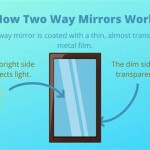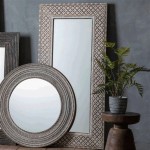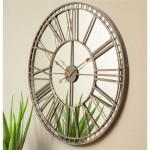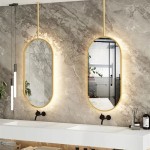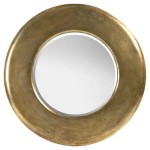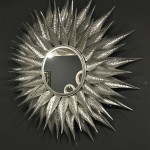How to Make Glass Look Like an Old Mirror
Antique mirrors possess a unique charm, characterized by speckled aging, a hazy reflection, and often, an antique silvering or backing. Replicating this aged appearance on modern glass allows for incorporation of this aesthetic into contemporary designs. This article will explore several techniques for achieving this effect.
One popular method involves utilizing mirror effect sprays specifically designed for crafting. These aerosol sprays contain a mixture of metallic particles, solvents, and binders, creating a thin reflective surface when applied to glass. The key to simulating age lies in the application technique. Instead of a uniform coat, focus on creating subtle variations in thickness and coverage. This can be achieved by lightly spraying from a greater distance, allowing for natural irregularities in the coating.
Further enhancing the aged appearance, a second layer of a slightly different metallic hue can be applied once the first layer is dry. For example, a subtle gold or copper overspray on a base silver coat can create a warmer, aged tone. Experimenting with different color combinations can yield diverse results.
Another technique utilizes specialized antiquing solutions. These solutions react chemically with the mirror effect spray, causing controlled tarnishing and discoloration. Applying the antiquing solution selectively with a brush, sponge, or spray bottle allows precise control over the aging pattern. Areas prone to natural wear, such as corners and edges, can be treated more heavily to create a realistic effect.
For a more dramatic aged look, consider incorporating physical distressing techniques before applying the mirror effect spray. Lightly sanding the glass surface with fine-grit sandpaper creates micro-abrasions, subtly diffusing the reflection and mimicking the wear seen on genuine antique mirrors. Concentrating the sanding in specific areas creates a more focused effect.
A similar approach involves etching the glass with a specialized etching cream. This cream contains chemicals that react with the glass surface, creating a frosted or textured effect. Applying the etching cream through a stencil, or freehand for more organic patterns, allows for intricate designs and textures that contribute to the aged aesthetic. After etching, the mirror effect spray can be applied, further enhancing the aged appearance.
Adding a backing to the glass can also contribute to the illusion of age. Traditional antique mirrors often feature a dark backing, typically a layer of shellac or paint. Applying a thin layer of dark paint or tinted varnish to the back of the glass creates depth and enhances the aged effect. This technique is especially effective when combined with other aging methods, such as distressing or antiquing.
When working with mirror effect sprays and antiquing solutions, proper ventilation is essential. Always work in a well-ventilated area or use a respirator to avoid inhaling fumes. Protective gloves and eyewear are also recommended to prevent skin and eye irritation.
Experimentation is key to achieving the desired level of aging. Testing different combinations of techniques and materials on small glass samples before applying them to the final piece allows for refinement and control over the final outcome.
The choice of glass substrate also influences the final result. Thicker glass creates a more substantial feel, closer to that of antique mirrors. Consider using salvaged glass from old windows or picture frames for an authentic touch. The inherent imperfections and variations in these types of glass can further contribute to the aged aesthetic.
Black spot antiquing, a technique commonly observed on older mirrors, can be recreated using a mixture of black paint and a glazing medium. This mixture is applied sparingly to the back of the glass, simulating the deterioration of the silvering often seen in antique mirrors. Varying the concentration of the mixture creates different levels of opacity and allows for fine control over the effect.
Applying crackle medium to the back of the glass creates a network of fine cracks, further enhancing the illusion of age. After the crackle medium dries, applying a layer of metallic paint or varnish highlights the cracks and adds to the overall aged appearance. This technique works especially well when combined with black spot antiquing.
Finally, consider adding decorative elements to further enhance the aged illusion. Applying small, antique-style metal embellishments or framing the glass with an aged wood frame can complete the transformation. These details contribute to the overall authenticity and visual appeal of the finished piece.

How To Antique A Mirror Tutorial Jenna Sue Design

The Ultimate Guide On Diy Antique Mirrors So Much Better With Age

Diy Antique Mirror Easy To Do And Looks Authentic My Creative Days

How To Diy Antiqued Mercury Mirror Glass 17 Apart

The Ultimate Guide On Diy Antique Mirrors So Much Better With Age

How To Antique A Mirror Easy Diy Tutorial

Diy Antique Mirror Easy To Do And Looks Authentic My Creative Days

How To Antique A Mirror From The Front With Paint Average But Inspired

How To Antique A Mirror Tutorial Jenna Sue Design

Diy Mercury Glass Gilded Mirror Made From Old Photo Frames
